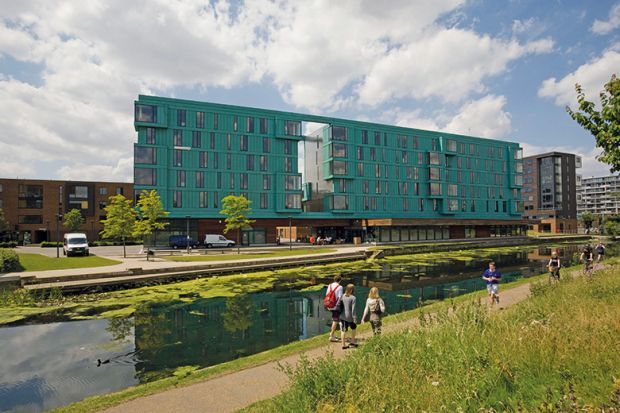At the age of 22, Colin Bailey took a risk – he applied for university.
“I had a good job – my friends couldn’t understand why I wanted to leave it,” recalled Professor Bailey, who, 28 years after enrolling as a mature student at the University of Sheffield, has taken over as the new president and principal of Queen Mary University of London.
Having left school when he was 16 to work as an apprentice draughtsman at a construction firm in West London, Professor Bailey had risen to become a design engineer, so he too was anxious about quitting his relatively well-paid job.
“University had not come on to my radar at school – it was an all-boys comprehensive, and I was very much pushed down the technical route,” he told Times Higher Education. “But I later found myself [at work] training graduates who were then going off to get better jobs than me, so I decided I needed to get a degree.”
Professor Bailey, who arrives at Queen Mary from the University of Manchester, where he was deputy vice-chancellor, credits his time as an undergraduate with transforming his understanding of structural engineering.
“I had designed a number of buildings around London before I went to university, but I didn’t have a grasp of the basic principles that you need to become properly creative,” he said.
However, although he finished top of his class at Sheffield, the collapse in the UK construction trade in the early 1990s meant that he received only one job offer after graduating.
“It was for a position paying less money than the job I’d left three years earlier,” he said, adding that he was “embarrassed to tell my parents that I had made a mistake in going to university”.
His blushes were spared when he was offered a PhD scholarship at Sheffield, followed by a postdoctoral research post, which allowed him to establish himself as world authority on fire safety in buildings.
Professor Bailey’s unusual route into higher education might explain why he seems particularly focused on Queen Mary’s efforts to support students from socially disadvantaged areas.
The university, based in London’s East End, is by some distance the most socially diverse of any Russell Group university: 42 per cent of its 17,000 undergraduates are the first in their family to go to university, 60 per cent are from an ethnic minority, and an incredible 27 per cent come from families where the annual household income is less than £10,000. However, admitting high numbers of students from disadvantaged backgrounds should be seen as only one part of Queen Mary’s role in improving social mobility, Professor Bailey explained.
“Our students might get a first, but it’s often the [graduates] from the more privileged backgrounds who get the job,” Professor Bailey said. About 10 per cent of a Queen Mary undergraduate’s course is now devoted to giving students “social and cultural capital” through career support and work placements, which will help them to gain top graduate jobs, he explained.
“Our graduates are getting good jobs, but are they getting the really top jobs that they have the capability to do?” he asked.
Professor Bailey’s extensive experience in industry – including a six-year stint after Sheffield working in industry-sponsored research centres before he joined Manchester in 2002 – also marks him out from his Russell Group peers, whose careers have, unsurprisingly, been spent almost wholly in academia.
Moving between these two worlds is, however, entirely normal for Professor Bailey, who continued his consultancy work while at Manchester. He was an expert witness at the inquiry into why the World Trade Center 7 building – the “third tower” – collapsed after the 2001 terrorist attack, and he was asked to investigate the 2005 fire that destroyed the 32-storey Windsor Tower in Madrid.
“My consultancy fed into my research and teaching,” he said.
“One day I would be in Madrid, and the next I would be telling students how the fire began and why the building collapsed,” he added.
With that background, Professor Bailey is keen to build on Queen Mary’s reputation for engagement with business (it is just two miles from the City’s financial centre) and the local community, including St Bartholomew’s Hospital, much of whose world-class medical research involves the university’s staff.
Too often, he added, the work of Queen Mary – which is ranked 121st in the latest Times Higher Education World University Rankings, the 14th highest UK institution – goes unrecognised.
“Queen Mary is, in some ways, one of the best-kept secrets in higher education,” said Professor Bailey. “I don’t see [another] university with our student profile that is producing so much globally recognised research and world-leading innovation.”
Register to continue
Why register?
- Registration is free and only takes a moment
- Once registered, you can read 3 articles a month
- Sign up for our newsletter
Subscribe
Or subscribe for unlimited access to:
- Unlimited access to news, views, insights & reviews
- Digital editions
- Digital access to THE’s university and college rankings analysis
Already registered or a current subscriber?


